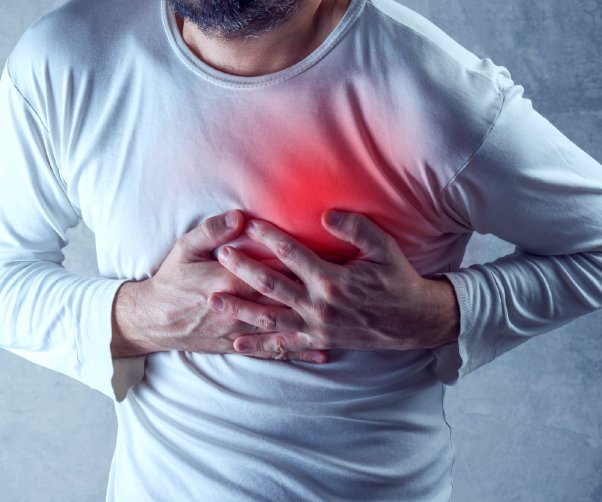
Can You Survive a Heart Attack? If So, How?
Every 40 seconds, an American has a heart attack, according to the Centers for Disease Control and Prevention. If it happens to you, one question matters most: Can you survive a heart attack?
“The simple answer is ‘yes,’” says Dr. Rahman Shah, Interventional Cardiologist at Methodist Le Bonheur Healthcare. “Doing so, however, requires knowing the signs so you can act quickly when one occurs. It also helps to do as much as you can now to protect your heart before a heart attack occurs.”
Here are some tips to get you started:
Tip1: Know the Symptoms of a Heart Attack
A heart attack, which doctors sometimes refer to as myocardial infarction, occurs when oxygen-rich blood can’t reach the heart, typically because of a blood clot. When the blood can’t get to the heart, the heart muscle begins to die. As heart muscle dies, you may begin to experience typical heart attack symptoms, including:
Chest Pain or Discomfort
The classic symptom of a heart attack, chest pain, may come and go or stick around for a while. It may feel like pressure, pain, fullness or squeezing in the chest. Women sometimes experience different heart attack symptoms, including shortness of breath, fatigue, abdominal pain and nausea.
Pain in Other Areas of the Body
While chest pain is most common, a heart attack can cause unexplainable pain in other areas, including your back, neck, jaw, arms or shoulders.
Shortness of Breath
Having a hard time catching your breath may indicate a heart attack. The problem can come before other symptoms arise or along with them.
Weakness
When a heart attack strikes, you may feel like you don’t have any strength or energy.
You may also experience other symptoms, like sweating or feeling faint or lightheaded.
Tip 2: Take Action When Symptoms Appear
When you notice heart attack symptoms, it’s critical to call 911 immediately.
“A heart attack cuts off blood flow to the heart,” Dr. Shah says. “Every moment that passes increases the amount of damage to the heart muscle and puts your life in danger.”
Calling 911 allows you to begin receiving medical care as soon as emergency medical services (EMS) providers arrive at your location. They can monitor your vital signs and provide emergency care while you’re on your way to the hospital. The EMS team can also alert the hospital that you’re coming so healthcare providers can prepare and deliver potentially lifesaving care as soon as you arrive.
At the hospital, your medical team will run tests to confirm that you are having a heart attack. They will then begin working to remove the blockage.
Treatments for heart attack include:
Balloon Angioplasty
During this minimally invasive procedure, an interventional cardiologist guides a thin, flexible tube (catheter) to the blocked artery causing the heart attack. The specialist then inflates a tiny balloon at the site, which pushes fat and cholesterol against the artery walls to allow the blood flow to resume. Sometimes, your provider may place a stent (small, wire mesh tube) in the artery to keep the artery open.
Bypass Surgery
A healthy blood vessel is removed from another part of the body and connected to both sides of the clogged artery. Blood then bypasses the blockage, so normal blood flow is restored.
Quick treatment from your medical team can help you survive a heart attack. Still, there are additional steps you can take after you recover to prevent a second one and keep your heart strong.
Tip 3: Protect Your Heart Now to Avoid a Second Heart Attack Later
One of the first things you should do after heart attack treatment is talk to your cardiologist about cardiac rehabilitation. This medically supervised program will help you recover from a heart attack using gentle exercises designed to repair and strengthen your heart. You’ll also learn diet and stress management tips to keep your heart healthy for the long term.
A good next step is talking to a cardiologist or primary care provider about your risk for heart disease. Coronary artery disease is the most common form of heart disease and the most common cause of heart attacks.
Learn your risk factors for coronary artery disease and how you can get them under control. Risk factors include:
-
Being overweight or obese
-
High blood pressure
-
High cholesterol
-
Smoking
Control Your Risk Factors
Control your risk factors by eating a heart-healthy diet, avoiding smoking and managing other health conditions. You may be able to cut your risk of a future heart attack even more with the following steps:
Communicate with Your Provider
Go to follow-up appointments with your care team. Ask questions and mention any changes in your health you’ve noticed. By going to every appointment, you help your team track your progress and modify your treatment if needed.
Follow Doctor's Orders
Medication, physical therapy and lifestyle changes play a key role in preventing future heart attacks. Make sure you understand your provider’s recommendations and follow them, particularly if they recommend medications to lower blood pressure and cholesterol.
SUBSCRIBE TO OUR BLOG
and you'll receive more health & wellness tips right in your inbox.
SUBSCRIBE NOW“Having one heart attack increases your risk of having another one,” Dr. Shah says. “However, you can be proactive about your heart health. Together with your medical team, you can help keep your heart healthy as long as possible.”
Methodist Le Bonheur Healthcare is ready with advanced heart attack care when you need it. Learn more about our accredited heart attack care or find a doctor who specializes in heart care.
Take a Heart Health Risk Assessment
Learn more about your current heart health and associated health risks by taking a health risk assessment. Our online assessment is quick, easy and confidential, and it can provide you with information that you can share with your doctor.
Take The Assessment
Related Articles


